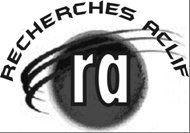La communication « vide » dans le théâtre de Ionesco
The Void Communication in Ionesco’s Plays
Author(s): Alexandrina MustăţeaSubject(s): Language and Literature Studies
Published by: Editura Echinox
Keywords: Eugène Ionesco; communication; lack of communication; transgression; deconstruction; absurd; intratextual universe; semantic meaning; pragmatic meaning.
Summary/Abstract: The void communication, a linguistic reality in the world of Eugène Ionesco’s texts, stays at the core of our study: La Cantatrice chauve, La Leçon and Les Chaises. The theme of impossible communication establishes, however, an indirect communication between the extradiegetic instances, namely the author and the reader, proving both that everything communicates in literature and that there is no real non-communication. To the nonsensical discourse of the characters respond the textual significations: non-communication brutifies, reifies and dehumanizes man; it leads to aggressivity and generates the absurd to the same extent as it is generated by it. This is the essential message the author wants to convey to his readers/spectators. We focus our study on some of the pragmatic facts which build up this world of the impossible communication which is specific to Ionesco’s theatre: on the one hand, the transgression of the generic – and paratextual – type of literary conventions and, on the other hand, that of the discourse laws and of the rules of textual coherence.
Journal: Recherches ACLIF: Actes du Séminaire de Didactique Universitaire
- Issue Year: 2010
- Issue No: 07
- Page Range: 73-86
- Page Count: 14
- Language: French

